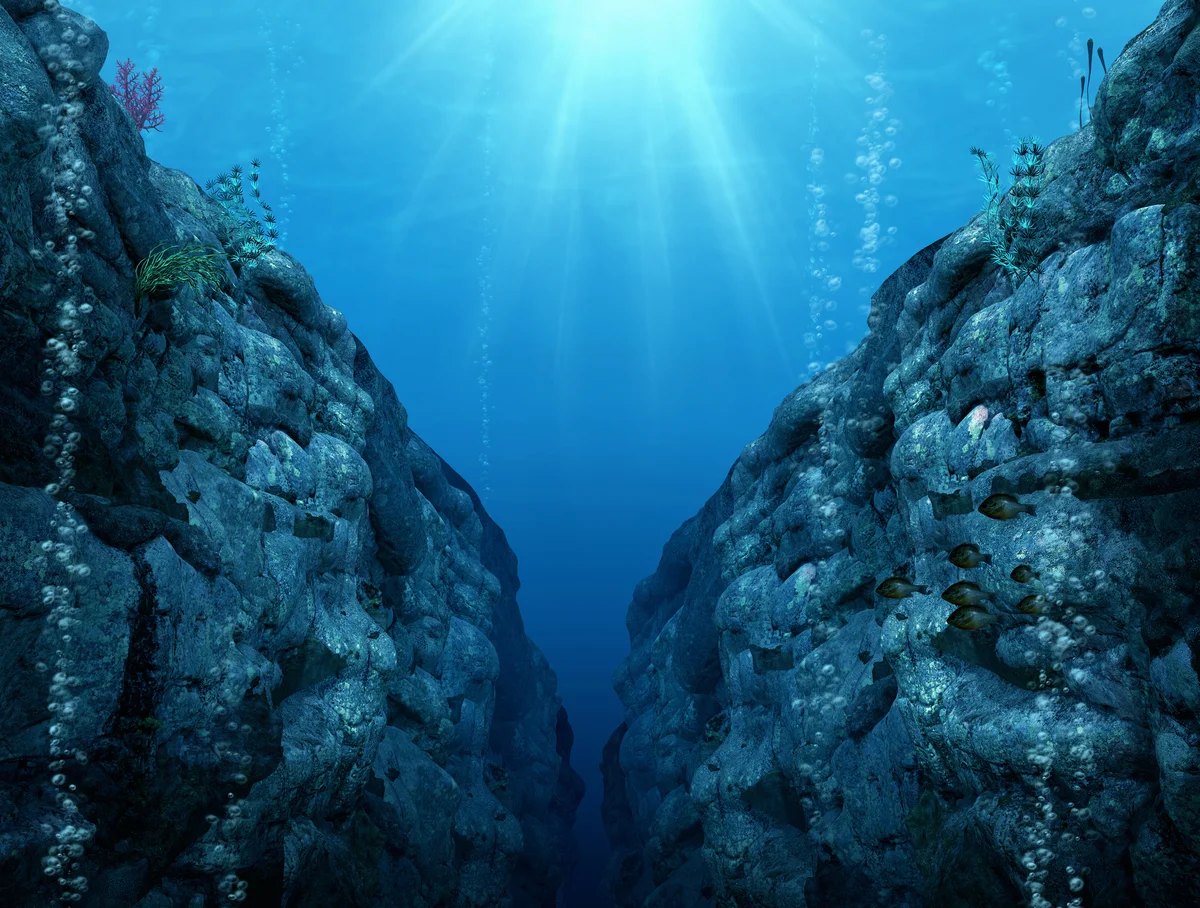
The Mariana Trench is a place of mystery and wonder, shrouded in the depths of the Pacific Ocean. As the deepest known part of the Earth's oceans, it has captivated the imagination of scientists and explorers for decades. This article aims to uncover 15 fascinating facts about the Mariana Trench, shedding light on its unique features and the incredible life forms that inhabit its extreme environment. From mind-boggling depths to astonishing creatures, the Mariana Trench holds a wealth of secrets waiting to be explored. So, let's dive in and embark on a journey to discover the remarkable world hidden beneath the ocean's surface.
Key Takeaways:
- The Mariana Trench, discovered in 1875, is the deepest part of the world’s oceans, deeper than Mount Everest is tall. It’s home to unique creatures and presents unparalleled opportunities for innovation.
- The trench is a geological enigma and a hotspot for scientific research. It offers a window into Earth’s history, inspires exploration, and holds the key to evolutionary mysteries.
Discovered in 1875
The Mariana Trench was first discovered in 1875 during the Challenger expedition, named after the HMS Challenger, the survey ship that led the scientific voyage. This remarkable finding unveiled the deepest part of the world's oceans, marking a significant milestone in oceanic exploration and research.
The Mariana Trench, located in the western Pacific Ocean, is the deepest oceanic trench on Earth. It stretches for over 1,500 miles and reaches a maximum known depth of approximately 36,070 feet at the Challenger Deep. This astounding natural wonder has captivated the curiosity of scientists, explorers, and the general public for decades.
Deeper Than Mount Everest is Tall
The Mariana Trench plunges to a depth greater than the height of Mount Everest, the world's tallest mountain. This fact never fails to astound, as it vividly illustrates the incomprehensible depths of the trench. At its deepest point, the Challenger Deep, the immense pressure is over 1,000 times greater than at the surface, creating an environment that remains largely unexplored.
Home to Unique and Mysterious Creatures
The extreme depths of the Mariana Trench harbor a diverse array of unique and mysterious marine life. From ethereal jellyfish to elusive snailfish, these creatures have adapted to survive in the trench's extreme conditions, where sunlight cannot penetrate and the water pressure is crushing. Exploring this fascinating ecosystem provides valuable insights into the adaptability of life in the most extreme environments on our planet.
The Pressure is Unfathomable
At the bottom of the Mariana Trench, the water pressure reaches an astonishing 15,750 pounds per square inch, an amount so immense that it's difficult to comprehend. This unparalleled pressure presents a formidable challenge for any human or technological exploration, highlighting the sheer magnitude of the forces at play in this enigmatic environment.
The Trench is a Subduction Zone
The Mariana Trench is a subduction zone, where the Pacific tectonic plate is being forced beneath the smaller Mariana plate. This geological process has significant implications, including the formation of volcanic arcs and the potential for seismic activity. Understanding the complex dynamics of subduction zones is crucial for advancing our knowledge of plate tectonics and mitigating the impact of natural hazards.
The Challenger Deep is the Deepest Point
The Challenger Deep, located within the Mariana Trench, is the deepest known point in the Earth's seabed. This abyssal plain plunges to unfathomable depths, offering a window into the geological history and processes that have shaped the ocean floor over millions of years.
The Trench is a Hotspot for Scientific Research
The Mariana Trench serves as a hotspot for scientific research, attracting multidisciplinary studies aimed at unraveling its geological, biological, and oceanographic secrets. The findings from these investigations contribute to our understanding of deep-sea ecosystems, hydrothermal vents, and the fundamental processes that govern the dynamics of the Earth's oceans.
The Hadal Zone Presents Unique Challenges
The hadal zone, which includes the extreme depths of the Mariana Trench, presents unique challenges for exploration and study. Overcoming the formidable pressures, extreme cold, and absence of light requires innovative technologies and specialized equipment to delve into this mysterious realm. These challenges drive the development of cutting-edge research tools and deep-sea exploration capabilities.
The Trench is a Geological Enigma
The geological features of the Mariana Trench continue to intrigue scientists, as they strive to unravel the complex processes that have shaped this enigmatic landscape. From the formation of abyssal plains to the occurrence of seismic events, the trench provides a natural laboratory for investigating the dynamic interactions between tectonic plates and the Earth's crust.
It's a Window into Earth's History
Studying the Mariana Trench offers a unique opportunity to peer into the depths of Earth's history. The sedimentary layers and geological formations found within the trench hold valuable clues about past environmental changes, ancient oceanic conditions, and the evolution of the planet over geological timescales.
The Trench Inspires Exploration and Discovery
The allure of the Mariana Trench has inspired generations of explorers and researchers to push the boundaries of knowledge and embark on daring expeditions to uncover its secrets. This spirit of exploration fuels the quest for new discoveries and fosters a deep appreciation for the wonders of the natural world.
It's a Natural Wonder of Global Significance
The Mariana Trench stands as a natural wonder of global significance, showcasing the awe-inspiring power and complexity of the Earth's oceans. Its profound depths and unique ecological communities underscore the importance of preserving and understanding our planet's marine environments.
The Trench Holds the Key to Evolutionary Mysteries
The extreme conditions of the Mariana Trench provide a testing ground for understanding the limits of life on Earth and the potential for life to exist in extraterrestrial environments. By studying the adaptations of organisms in the trench, scientists gain insights into the fundamental mechanisms of evolution and the potential for life beyond our planet.
It Presents Unparalleled Opportunities for Innovation
Exploring the Mariana Trench fuels innovation across scientific, engineering, and technological domains. From designing advanced deep-sea submersibles to developing resilient materials capable of withstanding extreme pressures, the challenges posed by the trench spark inventive solutions and drive progress in diverse fields.
The Trench Connects Humanity to the Depths of the Earth
The Mariana Trench serves as a profound link between humanity and the unfathomable depths of the Earth. By delving into its mysteries, we gain a deeper appreciation for the interconnectedness of our planet and the enduring quest to unravel the secrets concealed beneath the ocean's surface.
The Mariana Trench, with its astonishing depths and enigmatic allure, continues to captivate the imagination of explorers and scientists alike. Its significance extends far beyond its physical dimensions, serving as a gateway to understanding the complexities of our planet and the remarkable adaptations of life in extreme environments. As we continue to unravel the mysteries of the Mariana Trench, we embark on a journey of discovery that enriches our understanding of the Earth and the boundless wonders it holds.
Conclusion
In conclusion, the Mariana Trench is a fascinating and mysterious place that continues to captivate scientists and explorers alike. Its incredible depth, unique ecosystem, and geological significance make it a truly remarkable natural wonder. As we continue to uncover more about this enigmatic trench, it serves as a reminder of the endless marvels that our planet holds beneath the surface. The Mariana Trench stands as a testament to the awe-inspiring forces of nature and the boundless potential for discovery that exists within our oceans.
FAQs
What makes the Mariana Trench so deep?
The Mariana Trench is exceptionally deep due to the tectonic activity in the region. It is located at a convergent plate boundary where the Pacific Plate is subducting beneath the smaller Mariana Plate, creating a deep trench.
Is it possible for humans to explore the Mariana Trench?
Yes, humans have ventured into the Mariana Trench. In 1960, Jacques Piccard and Don Walsh descended to the trench's deepest point in the bathyscaphe Trieste. Since then, several other expeditions have explored this remarkable underwater landscape.
Intrigued by the wonders of the Mariana Trench? Continue your deep-sea exploration with our captivating articles on the Mariana Trench Marine National Monument, where you'll uncover unbelievable facts about this protected area. For those curious about other underwater marvels, our piece on ocean trenches will satisfy your thirst for knowledge. And if you're in the mood for something completely different, why not dive into the fascinating world of Josh Ramsay?
Was this page helpful?
Our commitment to delivering trustworthy and engaging content is at the heart of what we do. Each fact on our site is contributed by real users like you, bringing a wealth of diverse insights and information. To ensure the highest standards of accuracy and reliability, our dedicated editors meticulously review each submission. This process guarantees that the facts we share are not only fascinating but also credible. Trust in our commitment to quality and authenticity as you explore and learn with us.


